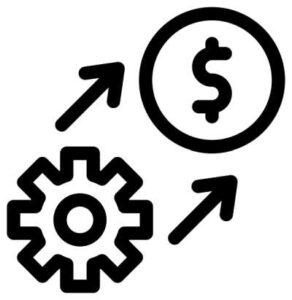 Selling through community is a way to always be able to get instant feedback on offers and print money. But turning a free community like a Facebook group into a paid membership isn’t just about adding a paywall. It’s a careful shift in positioning, value delivery, and member experience. Do it well and you’ll gain focus, healthier engagement, and a sustainable engine to fund products, events, and VIP support. Do it poorly and you risk confusion, resentment, and churn. This guide gives you a practical, step-by-step playbook to make the transition confidently, and keep your community’s trust along the way.
Selling through community is a way to always be able to get instant feedback on offers and print money. But turning a free community like a Facebook group into a paid membership isn’t just about adding a paywall. It’s a careful shift in positioning, value delivery, and member experience. Do it well and you’ll gain focus, healthier engagement, and a sustainable engine to fund products, events, and VIP support. Do it poorly and you risk confusion, resentment, and churn. This guide gives you a practical, step-by-step playbook to make the transition confidently, and keep your community’s trust along the way.
1. Decide if a paid transition makes sense
Before changing anything, confirm the problem a paid model solves:
- Capacity & quality: You’re at the limits of what you can deliver for free (moderation, Q&A, events).
- Clear transformation: Members can name a specific outcome they expect (e.g., “launch my first product,” “earn the certification,” “land five clients”).
- Willingness to pay: You consistently hear, “How can I work with you more closely?” or members already hire you for 1:1 help.
- Comparable markets: Similar communities charge, and your value proposition is at least as strong.
If you can’t articulate the before → after transformation in one sentence, wait. Paid communities monetize outcomes, not chatter.
2. Define the promise and who it’s for
Paid communities work when the promise is specific. Try this:
Membership Promise: In 90 days, help [ideal member] go from [current struggle] to [specific outcome] through [method: curriculum, coaching, accountability, peers].
Examples:
- “Help freelance designers raise rates 25% with packaging, negotiation scripts, and a pricing peer circle.”
- “Help new managers run confident 1:1s, prioritize work, and deliver their first successful quarter.”
Nail the promise first. Everything else—pricing, tiers, events, content—must serve it.
3. Design tiers and pricing that signal value
Keep it simple at launch:
- Free (Gateway/Newsletter) – Light community updates, occasional open sessions.
- Core member (Most members) – Full community access, weekly programming, resource library, replays, templates, and member directory.
- Pro/Plus member (Smaller group) – Everything in Core plus monthly small-group coaching, office hours, or live critiques.
 Pricing tips
Pricing tips
- Anchor with a visible value stack (e.g., templates worth $X, monthly workshops worth $Y, discounts worth $Z).
- Use annual event and sell membership at a discount (or two months free) to improve offer and retention.
- Avoid underpricing; it implies low value and invites disengagement.
- Consider a founding member rate for the first 100 that you’ll honor as long as they stay active.
4. Map benefits to the habit loop
Members stay when there’s a reliable loop: trigger → action → reward within the first week.
- Trigger: Welcome email + calendar invite + @mentions.
- Action: Complete onboarding, introduce yourself, attend a kickoff call, pick a 30-day goal.
- Reward: A quick win—template downloaded, feedback received, new contact made, plan created.
If nothing meaningful happens in the first 72 hours, the risk of churn skyrockets.
5. A 90-day transition timeline
Weeks 1–2: Discovery & audit
- Survey your community: outcomes desired, price tolerance, preferred formats.
- Audit content & events: What already works? What needs structure?
- Choose a platform (or upgrade your current one) with payments, private spaces, events, search, and analytics.
Weeks 3–4: Offer design & seeding
- Write the promise, define tiers, draft the 90-day content/programming calendar.
- Recruit 10–20 trusted members as an Advisory Circle; show them the plan, gather objections, adjust.
- Seed the paid space with templates, starter discussions, and two scheduled events.
Weeks 5–6: Founding Member Pilot
- Quietly invite your Advisory Circle + power users at a special founding rate.
- Run one flagship event and one office hours session; collect testimonials and wins.
- Fix onboarding gaps (emails, permissions, calendar invites, replay workflow).
Weeks 7–8: Public Announcement
- Announce the shift with clarity (see comms script below).
- Give a grace period (e.g., 21–30 days) where both free and paid spaces operate.
- Offer a founding-member window (e.g., 10–20% off, limited seats, expires on a specific date).
Weeks 9–12: Transition & Optimization
- Move core programming behind the paywall; keep a free “lobby” for announcements and occasional open sessions.
- Track early metrics (conversion rate, activation within 72 hours, live attendance).
- Iterate fast, tweak onboarding, calendar reminders, and content cadence based on feedback.
 6. Communication: how to explain the change
6. Communication: how to explain the change
People accept change when it feels fair, transparent, and beneficial.
Announcement template (post/email)
Subject: What’s next for our community
Over the last [X] years, we’ve helped thousands of people [outcome]. To keep quality high and deliver more hands-on support, we’re introducing a paid membership starting [date].
What’s changing: Our workshops, resource library, and ongoing Q&A will move into the new member space. We’ll still keep a free “lobby” for announcements and occasional open sessions.
What you get as a member: Weekly live sessions, templates, replays, peer accountability circles, and direct support focused on helping you [result] in 90 days.
Founding Member rate: Join by [deadline] and lock in [price] as long as you remain active.
We’re grateful for your support. This change lets us invest in programming, bring in guest experts, and show up for you consistently. Full details and FAQs are here: [link].
Questions? Reply to this email—we’re listening.
Address objections upfront
- “I can’t afford it right now.” → Offer a scholarship pool, quarterly plan, or limited “day pass” for big events.
- “Will free go away?” → Reassure them the free lobby remains, paid funds the depth and consistency.
- “Is it worth it?” → Share early wins, screenshots, and a 30-day satisfaction guarantee.
7. Platform and migration mechanics
Whether you use Slack/Discord + a payment tool, an all-in-one community platform, or your course LMS, ensure you can:
- Gate content and spaces by tier.
- Offer one-click calendar subscription and automatic event reminders.
- Provide searchable replays and file organization by topic.
- Manage billing, proration, trials, and coupons cleanly.
- Export data (emails, activity) to your CRM for onboarding and renewal nudges.
Migration tips
- Don’t move everything. Curate the best 10–20 assets into your new library.
- Archive long, noisy channels; create fewer, clearer spaces aligned to outcomes.
- Build an onboarding checklist inside the platform so new members finish setup.
8. Onboarding that activates quickly
Your first week should have friction-free steps:
- Welcome email with login, how to introduce yourself, and the calendar link.
- Pinned “Start Here” post with a 5-step checklist (profile, intro, pick a goal, RSVP to the kickoff, download the starter template).
- Kickoff call Invite new folks to a zoom call that sets norms and gets people into breakout pairs.
- Create cohort assignments so no one is alone.
- Early win challenge—something members can complete in under 30 minutes.
Measure time to first value and keep shrinking it.
9. Build your programming cadence to create momentum
Consistency beats intensity. Aim for a simple weekly rhythm:
- Live sessions (workshop, coaching, or guest expert).
- Office hours for Q&A and quick reviews.
- Create a resource area (templates, checklists, or eBooks).
- Create accountability touch (assign mentors and cohort check-ins).
Publish a 90-day calendar in advance and repeat proven formats. Record everything, tag replays by outcome, and recap key insights in a weekly digest.
10. Pricing psychology and revenue math
A membership must fund the experience:
- Cost model: Add up platform fees, your time (or team), guest experts, and ops. Add a margin.
- Break-even: If costs are $3,000/month and price is $49/month, you need ~62 members to break even.
- Upgrade path: Offer add-ons (1:1 sessions, premium cohorts, events) for 10–20% of members.
- Annual plans: Target 30–50% annual to stabilize cash and reduce churn.
Revisit price every 6–12 months as value and costs evolve; grandfather founding members when possible.
11. Retention: how to keep members beyond the honeymoon
- Recognition: Member spotlights, wins of the week, badges, “streak” acknowledgments.
- Progress tracking: A simple dashboard or checklist toward the 90-day outcome.
- Renewal runway: Start the renewal conversation 30 days before annuals; remind them of progress and what’s next.
- Churn save: Exit survey + quick “can we help?” option; offer a pause plan rather than a straight cancel.
Remember: people don’t leave because it’s expensive; they leave because it’s not being used. Focus relentlessly on activation and quick wins.
12. Legal, payments, and policies
Keep the back office clean:
- Terms & refund policy: Clear trial rules, cancellation, and refunds (e.g., “7-day satisfaction guarantee for first-time members”).
- Code of conduct: Safety, inclusion, and no-pitching rules; escalation path for issues.
- Privacy: How you store and use member data; recordings policy for events.
- Taxes: If you sell globally, research VAT/sales tax collection and platform features.
- Dunning & receipts: Automated card-retry and invoice receipts reduce support burden.
 13. Metrics that matter
13. Metrics that matter
Instrument the basics from day one:
- Conversion rate: % of active free members who upgrade during the founding window and ongoing.
- Activation: % of new paid members who complete onboarding + attend one event within 7 days.
- Engagement: Weekly Active Members (WAM), live attendance rate, posts/comments per member.
- Churn: Monthly and annual; segment by tenure (under 90 days vs. long-term).
- ARPU & MRR: Average revenue per user and total monthly recurring revenue.
- NPS/CSAT: Short surveys after major events and at day 30.
Review monthly, pick one bottleneck, fix it, and move on.
14. FAQs you’ll likely face
Will the free group disappear?
No. We’ll keep a free lobby for announcements and occasional open sessions, the paid space funds deeper programming.
Can I try before I buy?
Yes—there’s a 7-day trial (or a 30-day guarantee), and we host periodic open events.
What if I can’t afford it?
We offer scholarships and a quarterly payment option. Reply to the announcement and we’ll help.
What if I join and it’s not for me?
We offer a satisfaction guarantee for first-time members and a simple cancel/pause policy.
15. Two copy-and-paste scripts
Founding Member Invitation (DM/Email)
You’ve been a key voice in our community, and I’d love you in our new member space as a Founding Member. We’re focusing on helping [ideal member] achieve [specific outcome] in 90 days with weekly sessions, templates, and peer accountability. If you join by [date], you’ll lock in [price] for as long as you stay active. Want the details?
Upgrade Nudge (Day 10 of Founding Window)
Quick reminder: the Founding Member window closes on [date]. If you’ve been on the fence, here’s what members have shipped in week one: [3 short wins]. Join now to lock in the rate and get access to [next week’s flagship workshop].
16. Common pitfalls—and how to avoid them
- Ambiguous promise: “Access to a community” isn’t a reason to pay. Make the outcome explicit.
- Too many channels: Start with fewer, outcome-aligned spaces. Noise kills value.
- Paywalling everything overnight: Use a grace period and keep a useful free lobby.
- No onboarding: “Welcome!” is not onboarding. Provide a checklist and a kickoff ritual.
- Inconsistent cadence: Publish a 90-day calendar and show up.
- Under-communicating change: Announce early, repeat often, and invite feedback.
17. The mindset shift: from forum to product
A paid membership is a product with a promise, roadmap, and operations. Treat it like one:
- Roadmap content 90 days at a time.
- Run retros after big events.
- Budget for guest experts, platforms, and a community manager.
- Keep talking to members—interviews beat guesses.
You don’t earn trust with a paywall—you earn it by delivering a reliable path to results. If you define a sharp promise, design a simple tiered offer, over-communicate the transition, activate members in the first week, and keep a steady cadence of value, your community will gladly fund the experience that helps them win.
Start small: write your one-sentence promise, sketch a 90-day calendar, invite 20 founding members, and run your first month. Momentum—not perfection—makes the transition succeed.








 6. Communication: how to explain the change
6. Communication: how to explain the change 13. Metrics that matter
13. Metrics that matter
Leave a Reply